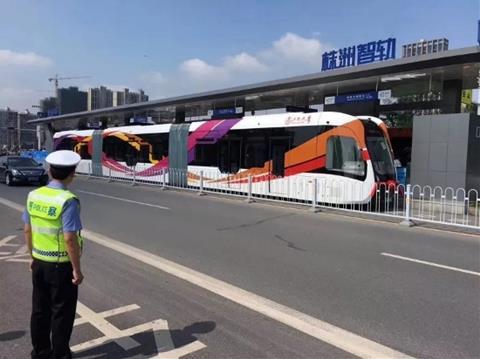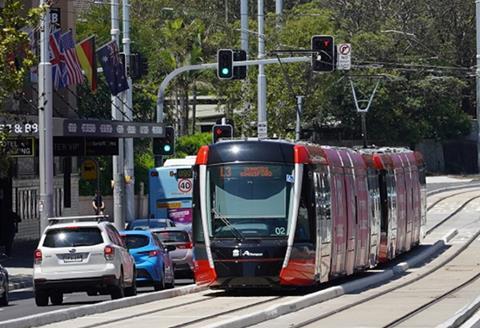
AUSTRALIA: The Australasian Railway Association has published a report highlighting the social benefits of light rail and making recommendations to help support future development, and also cautioning against ‘gambling’ with what ARA describes as unproven and untested ‘trackless tram’ technology-guided bus systems.
The Renaissance of Light Rail report which ARA commissioned from RPS Group found that trackless trams have been attracting interest because their implementation costs are said to be 50% to 65% lower per kilometre than conventional light rail and 90% cheaper than a metro. However, it says trackless trams are ‘a largely unproven mode’ which has had limited use globally, with technologies being considered in Australia being currently limited to Zhuzhou and Yibin in China.
A number of guided bus systems outside Australia were being decommissioned owing to challenges with delivering reliable services; examples cited included Eindhoven, Nancy and Caen, as well as buses designed with tram-like features in York and Las Vegas.
Concerns raised by the report include operation in snow, heavy rain and fog, regulatory requirements, a need to design road surfaces specifically for trackless trams, and proprietary technologies meaning supplier lock-in and a lack of competition in the market.
‘International experience has shown that while the technology may offer lower costs in the beginning, problems delivering reliable and comfortable journeys can lead to trackless trams being retired after a relatively short time in operation’, said ARA Chief Executive Caroline Wilkie.

The report also reviews light rail lines in Australia and elsewhere, assessing the circumstances where light rail is a better option than bus, bus rapid transit or heavy rail. It says light rail is well suited to areas where urban renewal is desired, and is the mode of choice when catering for high passenger volumes and a need for frequent stops.

Recommendations include refining policy frameworks to assess the broader benefits of light rail projects and take into account their impact on ‘place’ outcomes alongside the traditional transport benefits, developing a co-ordinated funding approach including engagement with local government stakeholders, and reducing delivery risks through an improved approach to risk sharing including for utility works.
‘Australia and New Zealand are already experiencing a renaissance of light rail as governments recognise the ease of access, connection and sense of community that can be realised from effective transport planning’, said Wilkie. ‘Light rail is an invaluable part of the wider transport network and offers real value as part of urban renewal efforts to meet population growth in our cities.’

















